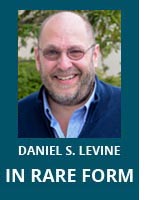 Hours after Rachel Callander’s daughter Evie was born, the infant was having difficulty eating and began choking. The medical staff at the hospital rushed her from the arms of her mother to a neonatal intensive care unit.
Hours after Rachel Callander’s daughter Evie was born, the infant was having difficulty eating and began choking. The medical staff at the hospital rushed her from the arms of her mother to a neonatal intensive care unit.
When doctors returned hours later, they explained to Callander that Evie had a rare chromosomal condition, one of only seven known cases. They spoke to her in what she describes as “terrifying language.”
“This is incompatible with life, these chromosome conditions,” the doctor said. “If she does survive, she’ll have severe mental retardation. She has congenital effects. She’s abnormal.” Callander recalls how she hated this language. She had seen how beautiful her daughter was. Nevertheless, it was the language she would come to use when she spoke to others about Evie.
Callander spoke during at keynote at the Global Genes Rare Patient Advocacy Summit, which runs October 3 to October 4 in Irvine. Her keynote address was about the use of empowering language in healthcare when facing a life-altering diagnosis, but she served as a fitting reminder about the essence of what it means to be a rare advocate.
Callander recalled how whenever she drove Evie near powerlines, or the electric sliding doors of a supermarket, she would become agitated and cry. She came to realize that Evie experienced the world differently than other people and that she had what Callander could only imagine was an electromagnetic sensitivity. She came to think of Evie as Baby Magneto, an X-Man imbued with superpowers.
As she thought about it more, she came to see everything about her daughter was “phenomenal,” from the way she expressed her happiness with the entirety of her body to the way she was able to communicate by varying the tone of her voice with the single sound she would make—“ouuuuuuuuu.” Callander saw in Evie a pure joy that drew people to her.
When she was out in public with Evie, people would ask Callander, “What’s wrong with your child?”
Callander would reply with the medical language the doctors used and rattle off “partial trisomy 9 and partial trisomy six and multiple ventricular signal defects and respiratory issues. She can’t walk, can’t talk.”
It was a response Callander hated to give because she felt that it failed to communicate anything about her daughter that she loved. “I felt like I was letting her down,” she said.
That’s when she started using what she called her “superpower language.” When someone asked her, “What’s wrong with your child?” she learned to say “Nothing, she has superpowers.”
“What do you mean?” they would reply.
And then Callander would explain how she and Evie made up games, how even though Evie didn’t use words, she communicated clearly, and how she laughed at the funniest things. And when Callander replied in this way, she said, people would be drawn to Evie, and say, “Yes, look at her. Isn’t she beautiful.”
“At that moment, Evie became a human being to them instead of this collection of failing body parts,” said Callander. “At that moment there was an acceptance of diversity. Those strangers I met became bigger for knowing who Evie was, and Evie was a beautiful part of our community because I got to share everything about her that I loved.”
Advocates have battles to fight on many fronts. But as a foundation for all of what they do—whether its discussions with providers, payers, educators, legislators, or others—they should take a lesson from Callander. As a first principle, they should consider that their role is to change the way others view the people for whom they advocate.
The key is that when these various targets of advocacy view someone with a rare condition that they are made to see not a disability or a disease, but a person.
And that is a fitting message with which to kick off a rare patient advocacy summit.
October 3, 2018
Photo: Rachel Callander delivers a keynote address at the Global Genes Rare Patient Advocacy Summit

Stay Connected
Sign up for updates straight to your inbox.
